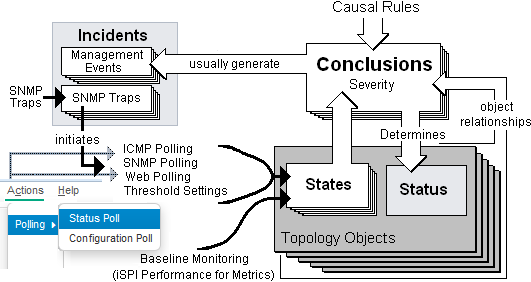Searching the Help
To search for information in the Help, type a word or phrase in the Search box. When you enter a group of words, OR is inferred. You can use Boolean operators to refine your search.
Results returned are case insensitive. However, results ranking takes case into account and assigns higher scores to case matches. Therefore, a search for "cats" followed by a search for "Cats" would return the same number of Help topics, but the order in which the topics are listed would be different.
| Search for | Example | Results |
|---|---|---|
| A single word | cat
|
Topics that contain the word "cat". You will also find its grammatical variations, such as "cats". |
|
A phrase. You can specify that the search results contain a specific phrase. |
"cat food" (quotation marks) |
Topics that contain the literal phrase "cat food" and all its grammatical variations. Without the quotation marks, the query is equivalent to specifying an OR operator, which finds topics with one of the individual words instead of the phrase. |
| Search for | Operator | Example |
|---|---|---|
|
Two or more words in the same topic |
|
|
| Either word in a topic |
|
|
| Topics that do not contain a specific word or phrase |
|
|
| Topics that contain one string and do not contain another | ^ (caret) |
cat ^ mouse
|
| A combination of search types | ( ) parentheses |
|
- Manage Incidents Using Incident Configurations
- How NNMi Gathers Incidents
- How NNMi Closes Incidents
- Incident Configurations Provided by NNMi
- About Custom Incident Attributes for an Incident
- Manage the Number of Incoming Incidents
- Configure an Action for an Incident
- Configure Diagnostics for an Incident
- Incidents Configurations You Might Want to Enable
- Using the Command Line to Manage Incident Configurations
How NNMi Gathers Incidents
Incidents are information that NNMi considers important to bring to your attention regarding your network.
The NNMi Causal Engine analyzes the health of your network and provides the ongoing health status reading for each device. The Causal Engine also extensively evaluates problems and determines the root cause for you, whenever possible, sending incidents to notify you of problems. Any incident generated from a Causal Engine management event has an Origin of NNMi in your incident views. See Using the Incident Form for more information about incident attributes.
NNMi gathers information from the sources described in the following table.
| Information Source | Description |
|---|---|
| State Poller | Tracks changes in State for an object. See Accessing Device Details for more information about possible States per object. |
| SNMP Traps | Traps are unsolicited SNMP notifications that come from your network devices. The NNMi Causal Engine uses this information as symptoms during its analysis. SNMP traps can also appear as incidents if configured to do so, using the NNMi incident configuration feature. See Configure SNMP Trap Incidents for more information. |
| Conclusions |
Every Conclusion has a Severity associated with it. The Status reported for an object is the most severe of all outstanding Conclusions. In addition, Conclusions inform the user of the underlying cause (or reason) for an object's Status. A Conclusion generates an associated Incident if it is determined to be the root cause of a problem. |

See The NNMi Causal Engine and Incidents for an overview of what the NNMi Causal Engine does with the information collected. See About the Event Pipeline for an overview of the event pipeline path each trap or NNMi event takes before NNMi creates an incident. This chronological path guarantees that the data is analyzed in chronological order.
Note The Causal Engine also sends incident information that it generates through the event pipeline to guarantee the chronological order for determining its root cause incidents.
By default, NNMi includes preconfigured definitions for SNMP traps, Syslog Messages and the incidents generated by the NNMi Causal Engine. See Incident Views Provided by NNMi for more information.
Related Topics
Configure Syslog Message Incidents (ArcSight)
We welcome your comments!
To open the configured email client on this computer, open an email window.
Otherwise, copy the information below to a web mail client, and send this email to network-management-doc-feedback@hpe.com.
Help Topic ID:
Product:
Topic Title:
Feedback:





